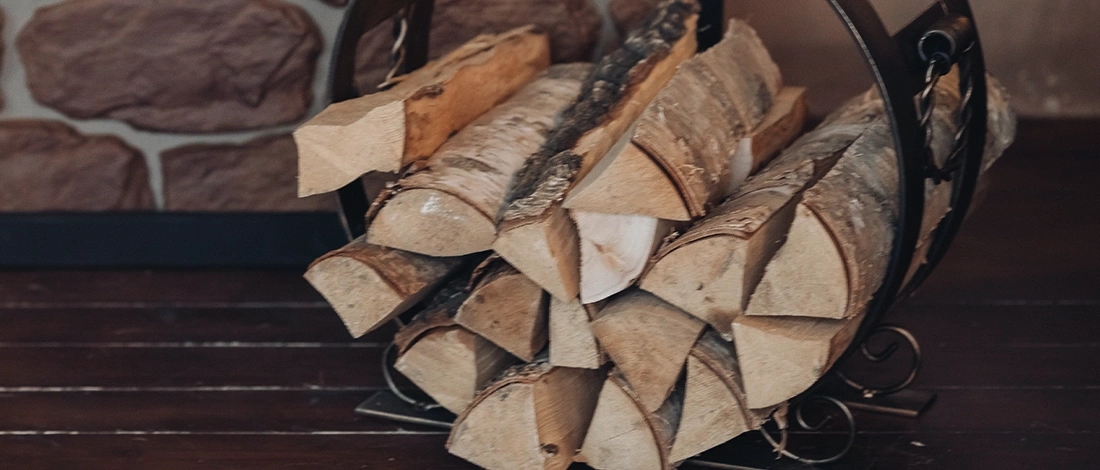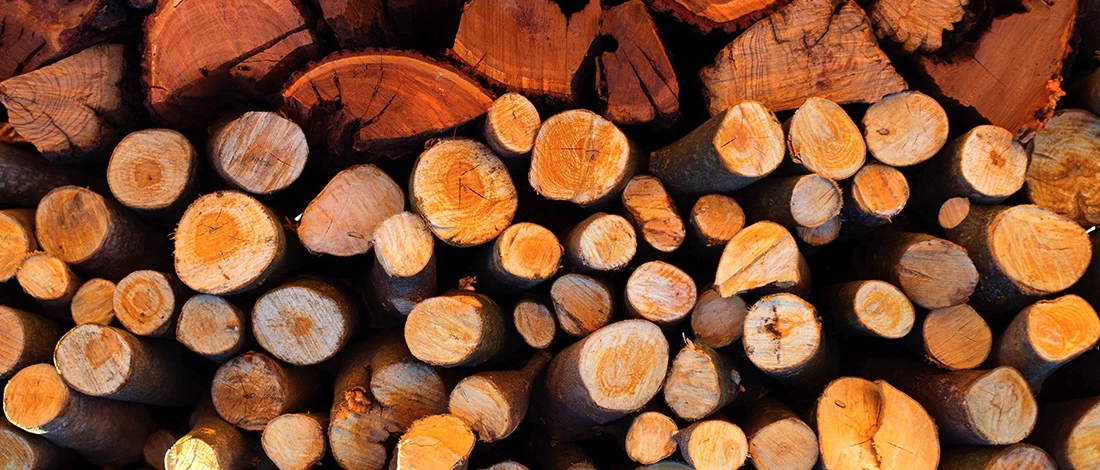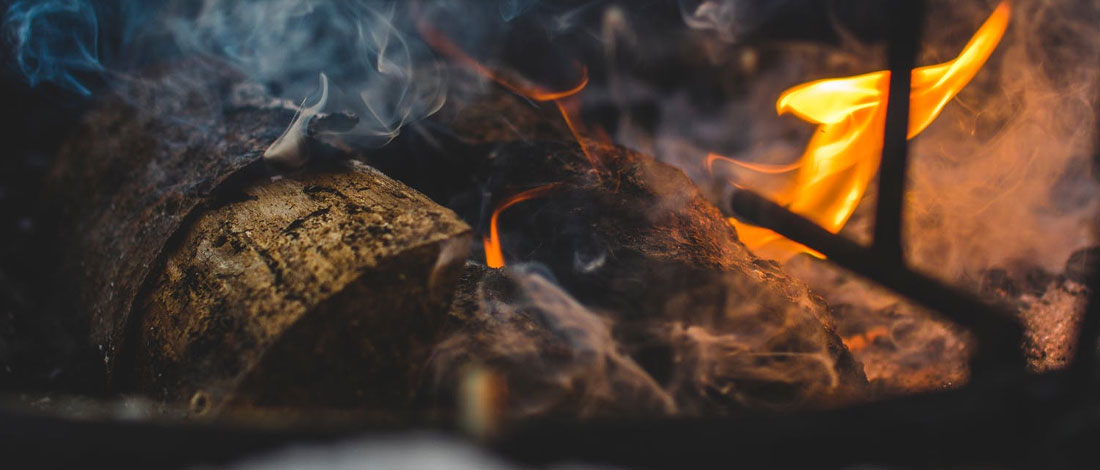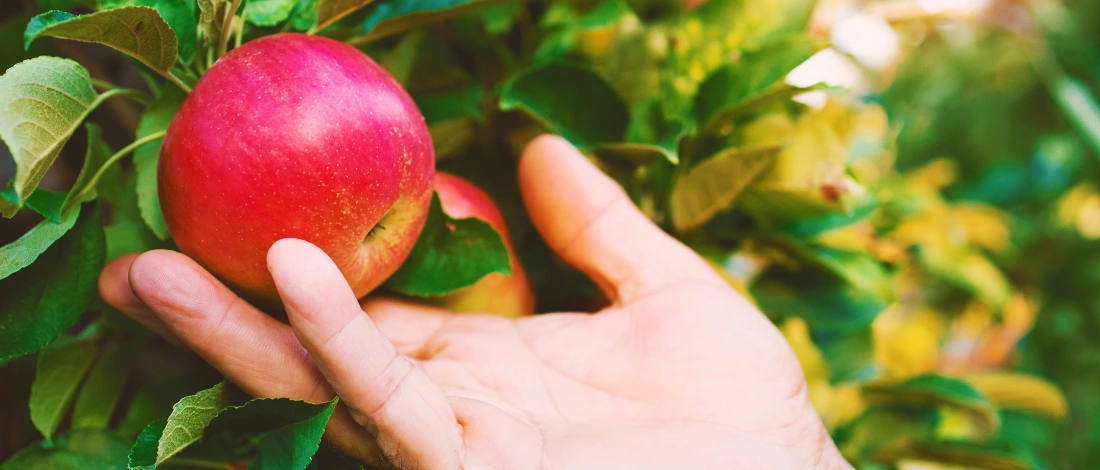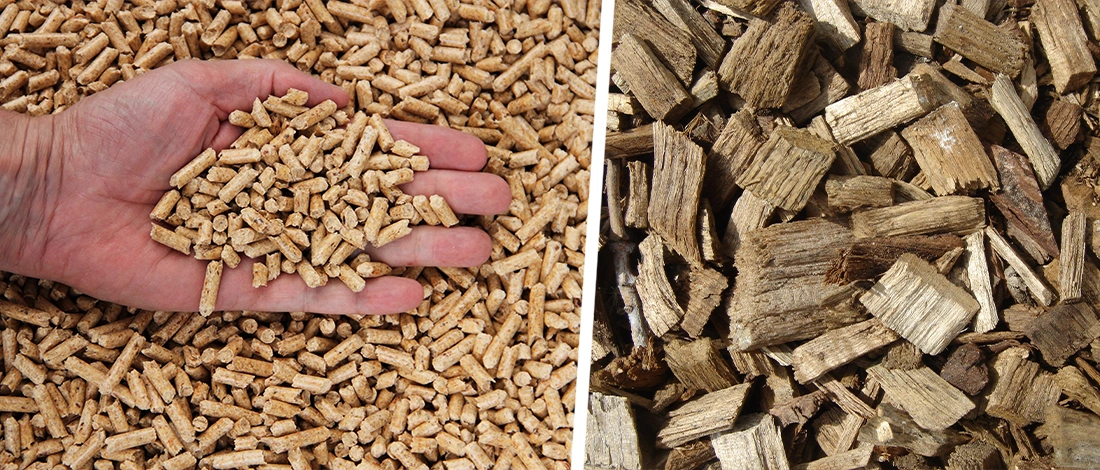To become a pitmaster, understanding how wood contributes to smoking meat is an intrinsic part of capturing the quintessential flavor!
In this article, our Carnivore Style experts will ensure that you properly learn how to identify the best smoking wood for your next meat-smoking session.
Quick Summary
- Different types of wood impart various flavors when used for smoking meat, with choices ranging from oak, hickory, maple, to mesquite, among others.
- Woods like applewood giving a mellow flavor, while others like mesquite provide a strong flavor quickly.
- Experimentation is key in determining the perfect wood for smoking meat, with factors like the scent of the smoke and the type of meat being important considerations.
- And of course, there are also other kinds of smokers that use different types of fuel that you may want to consider when smoking meat.
Professional meat smokers recommend using the woods mentioned below in the article.
Best Wood For Smoking Meat
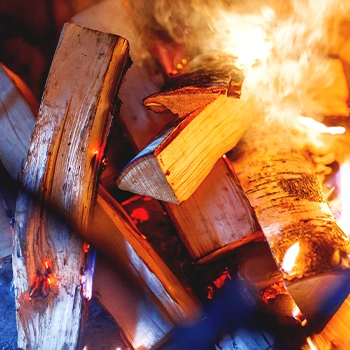
The ideal wood for smoking meat is cured hardwood. Cured wood basically means that the wood undergoes a drying period of 3 to 12 months, depending on the climate.
Kiln or oven-dried woods are the most readily available cooking woods as they undergo a more controlled process than sun-dried or air-dried wood.
However, while most commercial facilities rely on kiln wood, it is generally a bit too dry for smoking, causing it to burn too quickly, produce insufficient smoke, and lose its smoky flavor [1].
In comparison, any green, freshly-cut wood will contain too much moisture and sap, causing it to burn unevenly and imparting an unpleasant flavor into the meat.
It would be best to aim for cured or air-dried wood with a tiny bit of moisture to allow sufficient smoke to form.
- Avoid kiln wood if possible.
- Avoid green, freshly-cut wood.
- Aim to use cured (air-dried) wood.
Chips, Chunks, Or Logs?
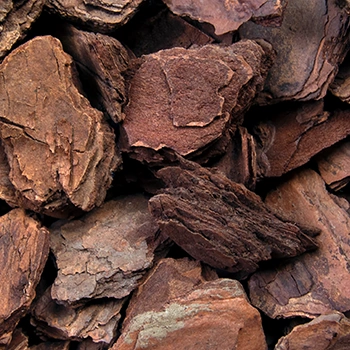
Regarding the different smoking woods for meat, you can use smoking chips, chunks, or logs (splits).
Chips: chips smoke quickly, but they tend to burn too quickly. So, they are best pre-soaked or wrapped in aluminum foil with lots of holes. Wood chips are best for short cooks on smaller grills and offset smokers.
Chunks: wood chunks are slightly bigger than chips, allowing them to burn slower without pre-soaking them.
Wood chunks are better for more significant smokers and longer smokes like brisket, pork belly, and ribs.
Logs: Logs or splints only suit larger smokers due to their size. You'll need proper airflow as it takes pretty long for the wood logs to burn into embers. However, they generate copious amounts of heat and smoke. So, you won't have to use charcoal as a heat source.
Best Types Of Wood For Smoking Meat
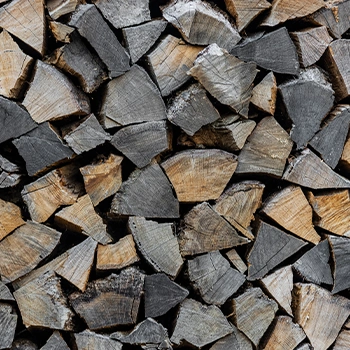
According to Carnivore Style's team, different woods offer various flavor profiles, so you'll want to pick the ideal type of wood for your smoking job.
For a straightforward guideline - use wood from a tree that produces nuts of fruits that you enjoy eating.
However, various varieties produce better smoke than others.
For example, using applewood will provide a mellow flavor without overpowering your food, but the smoky taste takes a long time to impart that outdoor flavor into the meat.
In comparison, mesquite offers a strong flavor in a short time, but it can become quite bitter if you smoke the meat for too long.
The best facet of a barbeque is the range of possibilities and experimentations available for pitmasters.
The ideal way to determine the perfect wood for smoking meat is to experiment on the grill before risking endless hours in your smoker.
Be sure to catch the scent of the smoke; if it is bitter or noxious, you should try a different wood.
According to pitmasters, here are the best woods for smoking meat:
1. Oak
Oak has long been the quintessential go-to wood for smoking meat. It is a safe and reliable starting place for novice smokers. Oak lends a medium, earthy flavor that is seldomly overpowering.
Great for: Beef, Lamb, Pork, Poultry, Brisket, and Sausage
2. Hickory
Hickory wood is your most versatile smoking wood. It lends a sweet and smoky bacon flavor, perfect for beef and pork. Although you can use hickory wood in endless ways, you'll want to be mindful that smoking it for too long will produce an intense, bitter flavor.
Great for: Pork ribs and shoulders, All red meat, Poultry
3. Maple
Maple is one of the most woods for smoking; it generally imparts an extraordinarily mild and subtle smoky flavor.
Great for: Poultry, Game foul, Veggies
4. Mesquite
Mesquite is a hardy wood that packs an intense, slightly sweet, and earthy tone to your meat. Due to its intensity, we recommend only using it for grilling or in small quantities.
Great for: Beef, Pork, and adding extra flavor while grilling.
5. Pecan
Pecan wood is another all-rounder that lends a rich, sweet, and nutty smoke flavor. Pecan wood can be so sweet that you may want to mix it with a harder wood to balance out the taste.
Great for: Beef, Pork, Poultry, Briskets, Roasts, and Ribs
6. Alder
While Alder does not produce a lot of smoke, it adds a mild and sweet profile to delicate types of meat. Alder is indigenous to the north-western United States, and it is the traditional wood for smoking salmon.
Great for: Fish and White Meat Poultry
7. Apple
Applewood when used for smoking lends a mild, sweet, and fruity flavor profile when smoking meat. Note that apple smoke takes pretty long to permeate the meat, so you'll want to anticipate several hours of smoking before achieving the mellow flavors.
Note that crabapple wood is exceptionally similar to applewood, and you can use the two kinds of wood interchangeably.
Great for: Chicken, Wild Foul, Pork, and Fish
8. Cherry
Cherry wood offers a mild to medium smoke level and goes with virtually any meat. It is sweet and fruity and best used with hardwood-like hickory as the two kinds of wood flavors complement one another well.
Great for: Chicken, Turkey, Pork, Ham, Beef, Duck, and Lamb
9. Grape
Grape wood exhibits a medium smoke intensity with a sweet, fruity flavor. At the same time, even though it smells superb when cooking, you'll want to avoid going overboard as the flavors can be a little heavy. Therefore, use grapevine sparingly on lamb and beef.
Great for: Beef, Dark Meat Poultry, Lamb, and Game
10. Peach
Like most fruit trees, peach has a mild, sweet, and slightly fruity smoking flavor. Peachwood is similar to hickory but slightly sweeter and less intense.
Great for: Poultry and Pork
11. Mulberry
Mulberry offers a similar taste to applewood - a mild, sweet, and slightly fruity flavor. Despite working well for almost all kinds of meat, it's primarily used for fish, pork, and Poultry.
Great for: Fish, Pork, and Poultry
12. Citrus
Citrus woods like lemon, orange, and grapefruit produce moderate smoke with a light fruity flavor. Citrus wood is milder than apple or cherry and needs to be smoked for pretty long to impart its smoky flavor into the meat.
Great for: Beef, Pork, Lamb, Poultry, and Fish
13. Almond
Almond wood gives a nutty, sweet flavor similar to pecan. Almond wood is versatile and ideal for all meats.
Great for: Beef, Pork, Lamb, Poultry, and Fish
Read More: How to Smoke Meat With Wood
How to Add Wood the Right Way?
Adding more wood is simple, but how much wood you need to produce smoke will vary.
To add wood, follow these steps:
- If you are using wet wood, soak the wood in water for at least 30 minutes before adding it to the smoker. This will delay the wood from starting to burn.
- Place wood chips in the smoker box or directly onto the coals. If using a box, place it on the grate above the direct heat source. If adding the wood directly to the coals, spread the wood evenly over the coals.
- Monitor the temperature of the smoker and the amount of smoke being created. If the smoker is not producing enough smoke, add more wood. If the smoker makes too much smoke, reduce the amount of wood used.
- Add more wood as needed throughout the smoking session. Depending on the type of wood used, it may need to be replenished every 30-45 minutes.
It is important to note that adding too much wood can result in an overpowering smoke flavor and can even cause the meat to become bitter.
It is best to start with a small amount of wood and gradually increase as needed.
Note: Wood stops smoking at around 750°F. Above this temperature, the wood will burn too rapidly to produce much smoke.
Wood To Avoid For Smoking

We recommend that you avoid using any softwoods or wood with a high sap content.
Additionally, stay far away from evergreen woods and chemically treated wood.
Avoid using:
- Cedar
- Cypress
- Elm
- Pine
- Fir
- Eucalyptus
- Redwood
- Spruce
- Sycamore
Related Articles:
References:
- https://www.masterclass.com/articles/kiln-dried-vs-air-dried-wood#4-ways-to-tell-if-wood-has-been-properly-seasoned


